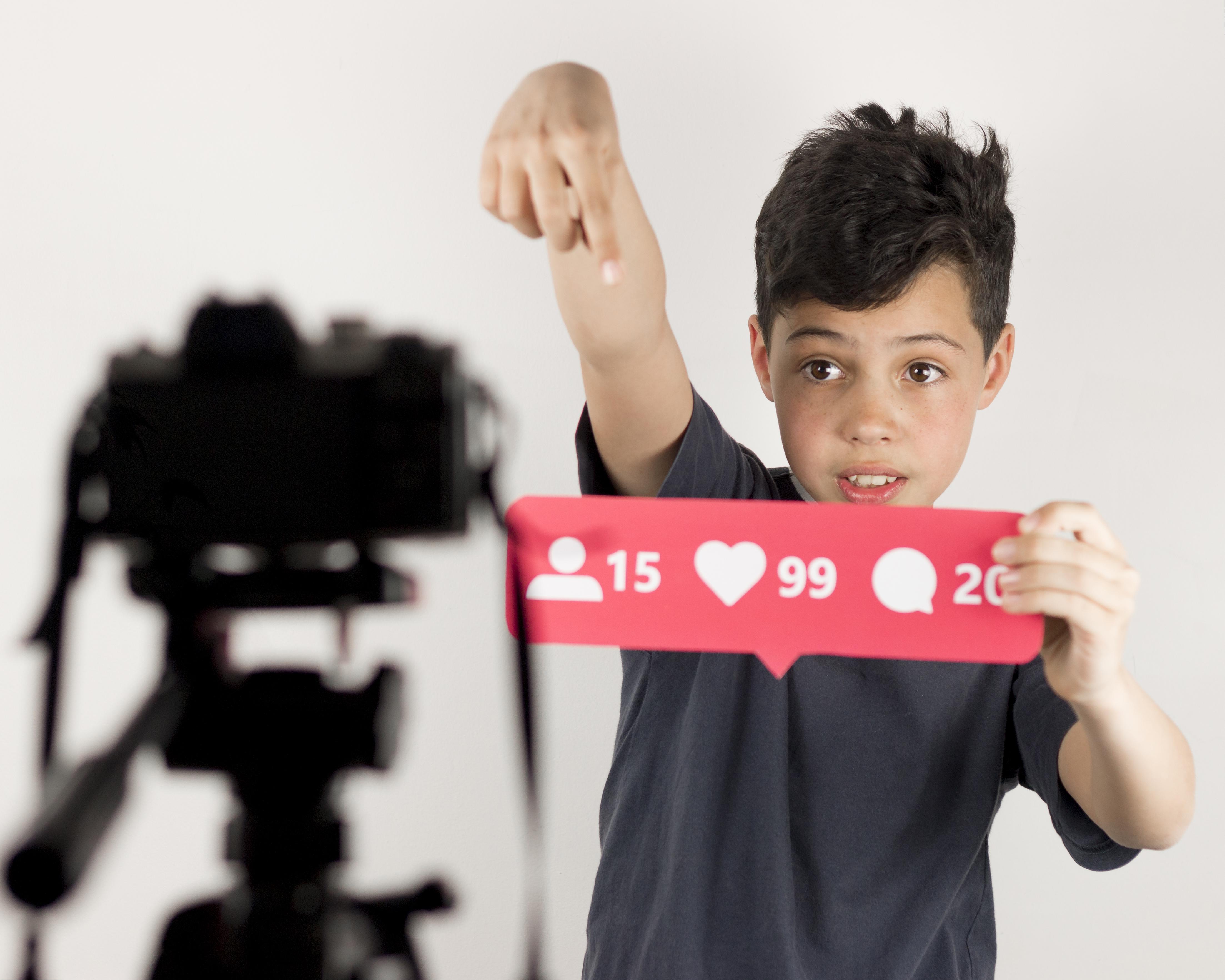Key Takeaways:
Episodic content transforms a brand from an advertiser into a publisher.
Episodic brand videos build sustained audience loyalty and viewership.
A strategic video series maximizes subscriber growth and return traffic.
The format allows for deep, nuanced brand storytelling and emotional connection.
Long-term engagement driven by serialized content significantly improves customer lifetime value (CLV).
The goal is to create content that the audience chooses to watch and follow.
Video has become the backbone of modern marketing strategies, transforming how brands connect with audiences. According to Wyzowl’s 2025 Video Marketing Statistics report, 89% of businesses now use video as a marketing tool. This widespread adoption highlights the need for brands to move beyond one-off ads and explore deeper storytelling formats. Episodic brand videos offer that opportunity by creating ongoing narratives that keep viewers coming back. Unlike standalone campaigns, a video series builds anticipation, fosters long-term engagement, and nurtures stronger emotional connections with audiences. By adopting this approach, brands establish continuity, reinforce their identity, and achieve meaningful engagement that stretches well beyond a single impression.
1. The New Media Model: Episodic Brand Videos
The fundamental difference between a single ad and a serialized campaign lies in motivation. An ad forces attention; an episode earns it. Episodic brand videos shift the brand's role from advertiser to content publisher. This change is crucial in a digital landscape where content is currency. When a brand creates a continuing narrative, a recurring educational segment, or a documentary-style series, it is giving the audience a compelling reason to subscribe and return for the next installment. This voluntary viewership is incredibly valuable because it bypasses ad-blockers and platform clutter, creating a direct, permission-based relationship with the consumer. The content itself becomes the lead magnet, attracting an audience that is inherently interested in the brand’s domain of expertise.
The strategic advantages of an episodic approach:
Subscriber Growth: Viewers subscribe to ensure they don't miss the next episode, building a sustained, owned audience.
Cost-Efficiency: The initial production cost of a set is spread over multiple episodes, reducing the per-minute cost compared to high-budget, one-off productions.
Platform Dominance: A steady stream of high-quality content helps a brand's channel gain traction and preferential treatment from algorithms on platforms like YouTube.
Brand Recall: Consistent exposure to a series' characters, theme music, and visual style deepens brand familiarity and recall over time.
Read more: AI in Video Production: What's Next for E-Learning?
2. Building Sustained Interest with a Video Series
The magic of serialized content lies in its structure. A strategic video series is built on the principle of the hook, the cliffhanger, and delayed gratification. Each episode must deliver value while creating anticipation for the next. This structure drastically improves the chances of a viewer returning and subscribing, maximizing return traffic rather than relying on costly outbound marketing for every piece of content. Furthermore, a series provides multiple opportunities to integrate the product or service subtly into the narrative, showing it solving problems in different contexts across several episodes, rather than just forcing it into a single 30-second spot.
Video Strategy | Goal | Viewer Behavior | Business Impact |
One-Off Ad | Immediate Conversion | Views once, often skips, high CPA. | Short-term sales spike, no sustained audience growth. |
Episodic Series | Sustained Viewership & Loyalty | Subscribes, returns weekly/monthly, low CPA. | Builds resilient audience, high CLV, consistent traffic. |
Read more: How to Use Video Testimonials in Promotional Campaigns
3. The Deep Dive into Brand Storytelling
Traditional advertising allows for only the shallowest form of narrative, often limited to a problem/solution formula. Episodic content, however, provides the canvas for deep brand storytelling. It allows a brand to explore complex themes, develop characters, and create a nuanced narrative that aligns the company's core values with universal human experiences. This depth is critical because consumers buy not just products, but the stories and values behind them. A series allows the brand to move beyond talking about product features and focus on themes like community, perseverance, innovation, or sustainability, thereby fostering a powerful emotional and ideological connection with the audience.
How episodic video enhances brand storytelling:
Nuanced Narrative: Allows for complex plots and character development that convey the brand’s mission over time.
Value Alignment: Provides consistent opportunities to showcase the brand's values in action (e.g., a series following an engineer solving a community problem).
Emotional Arc: Viewers become emotionally invested in the series' characters and their journey, transferring that emotional investment to the sponsoring brand.
Authenticity: Serialized documentaries or unscripted educational series inherently feel more authentic than polished commercials.
Read more: How to Use Storytelling to Make Your Learning Videos Unforgettable
4. Driving Value with Long-Term Engagement
The most significant business benefit of an episodic strategy is the long-term engagement it generates. When viewers subscribe and consistently return to a brand's content, they are signaling a profound level of loyalty. This sustained engagement translates directly into powerful business metrics: increased customer lifetime value (CLV), improved retention rates, and reduced cost per acquisition (CPA). Furthermore, consistent viewership provides the brand with invaluable first-party data on audience preferences and viewing habits, which can be used to inform product development, target future marketing campaigns, and ensure the content remains highly relevant and valuable over time.
Key benefits of long-term engagement:
Maximized CLV: Loyal, engaged subscribers buy more often and remain customers for longer.
Reduced CPA: Returning subscribers are free traffic, making the cost of acquiring future customers significantly lower.
Audience Feedback Loop: The comments and discussions generated by a series provide a rich source of free market research.
Search Authority: A deep library of quality content boosts the brand's authority on platforms like YouTube and Google, leading to increased organic discovery.
See how HSF helped Bambinos build ongoing engagement through powerful storytelling that inspires confidence and connection. Watch the video:

House Sparrow Films: Your Partner in Content Publishing
At House Sparrow Films, we specialize in creating episodic brand videos that resonate with audiences and sustain long-term engagement. From concept to production, we help brands design narrative arcs that entertain, educate, and inspire loyalty. Whether you want to launch a video series for thought leadership, product storytelling, or lifestyle branding, our expertise ensures your episodes align with audience habits while reinforcing brand identity.
Conclusion
One-off ads might spark quick impressions, but they fade just as fast. Episodic brand videos provide a sustainable model, nurturing deeper relationships through ongoing storytelling. They align with modern viewing habits, deliver stronger ROI, and keep audiences coming back for more. For brands seeking to move beyond transactions into long-term loyalty, episodic content is no longer optional; it’s the new standard for digital storytelling and engagement. Ready to shift your marketing budget from interruptive ads to compelling, serialized content? Contact us today to learn how House Sparrow Films can help you design and launch your own successful episodic video series.
Frequently Asked Questions
1. How long should an episode in a brand series be?
Episodes typically range from 5 to 15 minutes. The key is to make each episode as long as it needs to be to tell the story and deliver value, but no longer.
2. Is episodic content only for B2C companies?
No, it is highly effective for B2B. A B2B brand can create a serialized educational series, a documentary about industry innovation, or a recurring show featuring expert interviews.
3. How often should we release new episodes?
Consistency is key. A release schedule should be manageable and predictable, such as weekly, bi-weekly, or monthly. A regular schedule trains the audience to return.
4. What is the biggest risk of an episodic strategy?
The biggest risk is inconsistent quality or production delays. Viewers expect a high standard and a predictable schedule, making strategic planning and production reliability essential.
5. How do we measure the success of a video series?
Success is measured by long-term metrics: subscriber growth rate, audience retention across the series, return viewership, and the conversion rate of viewers into qualified leads or customers.
Key Takeaways:
Episodic content transforms a brand from an advertiser into a publisher.
Episodic brand videos build sustained audience loyalty and viewership.
A strategic video series maximizes subscriber growth and return traffic.
The format allows for deep, nuanced brand storytelling and emotional connection.
Long-term engagement driven by serialized content significantly improves customer lifetime value (CLV).
The goal is to create content that the audience chooses to watch and follow.
Video has become the backbone of modern marketing strategies, transforming how brands connect with audiences. According to Wyzowl’s 2025 Video Marketing Statistics report, 89% of businesses now use video as a marketing tool. This widespread adoption highlights the need for brands to move beyond one-off ads and explore deeper storytelling formats. Episodic brand videos offer that opportunity by creating ongoing narratives that keep viewers coming back. Unlike standalone campaigns, a video series builds anticipation, fosters long-term engagement, and nurtures stronger emotional connections with audiences. By adopting this approach, brands establish continuity, reinforce their identity, and achieve meaningful engagement that stretches well beyond a single impression.
1. The New Media Model: Episodic Brand Videos
The fundamental difference between a single ad and a serialized campaign lies in motivation. An ad forces attention; an episode earns it. Episodic brand videos shift the brand's role from advertiser to content publisher. This change is crucial in a digital landscape where content is currency. When a brand creates a continuing narrative, a recurring educational segment, or a documentary-style series, it is giving the audience a compelling reason to subscribe and return for the next installment. This voluntary viewership is incredibly valuable because it bypasses ad-blockers and platform clutter, creating a direct, permission-based relationship with the consumer. The content itself becomes the lead magnet, attracting an audience that is inherently interested in the brand’s domain of expertise.
The strategic advantages of an episodic approach:
Subscriber Growth: Viewers subscribe to ensure they don't miss the next episode, building a sustained, owned audience.
Cost-Efficiency: The initial production cost of a set is spread over multiple episodes, reducing the per-minute cost compared to high-budget, one-off productions.
Platform Dominance: A steady stream of high-quality content helps a brand's channel gain traction and preferential treatment from algorithms on platforms like YouTube.
Brand Recall: Consistent exposure to a series' characters, theme music, and visual style deepens brand familiarity and recall over time.
Read more: AI in Video Production: What's Next for E-Learning?
2. Building Sustained Interest with a Video Series
The magic of serialized content lies in its structure. A strategic video series is built on the principle of the hook, the cliffhanger, and delayed gratification. Each episode must deliver value while creating anticipation for the next. This structure drastically improves the chances of a viewer returning and subscribing, maximizing return traffic rather than relying on costly outbound marketing for every piece of content. Furthermore, a series provides multiple opportunities to integrate the product or service subtly into the narrative, showing it solving problems in different contexts across several episodes, rather than just forcing it into a single 30-second spot.
Video Strategy | Goal | Viewer Behavior | Business Impact |
One-Off Ad | Immediate Conversion | Views once, often skips, high CPA. | Short-term sales spike, no sustained audience growth. |
Episodic Series | Sustained Viewership & Loyalty | Subscribes, returns weekly/monthly, low CPA. | Builds resilient audience, high CLV, consistent traffic. |
Read more: How to Use Video Testimonials in Promotional Campaigns
3. The Deep Dive into Brand Storytelling
Traditional advertising allows for only the shallowest form of narrative, often limited to a problem/solution formula. Episodic content, however, provides the canvas for deep brand storytelling. It allows a brand to explore complex themes, develop characters, and create a nuanced narrative that aligns the company's core values with universal human experiences. This depth is critical because consumers buy not just products, but the stories and values behind them. A series allows the brand to move beyond talking about product features and focus on themes like community, perseverance, innovation, or sustainability, thereby fostering a powerful emotional and ideological connection with the audience.
How episodic video enhances brand storytelling:
Nuanced Narrative: Allows for complex plots and character development that convey the brand’s mission over time.
Value Alignment: Provides consistent opportunities to showcase the brand's values in action (e.g., a series following an engineer solving a community problem).
Emotional Arc: Viewers become emotionally invested in the series' characters and their journey, transferring that emotional investment to the sponsoring brand.
Authenticity: Serialized documentaries or unscripted educational series inherently feel more authentic than polished commercials.
Read more: How to Use Storytelling to Make Your Learning Videos Unforgettable
4. Driving Value with Long-Term Engagement
The most significant business benefit of an episodic strategy is the long-term engagement it generates. When viewers subscribe and consistently return to a brand's content, they are signaling a profound level of loyalty. This sustained engagement translates directly into powerful business metrics: increased customer lifetime value (CLV), improved retention rates, and reduced cost per acquisition (CPA). Furthermore, consistent viewership provides the brand with invaluable first-party data on audience preferences and viewing habits, which can be used to inform product development, target future marketing campaigns, and ensure the content remains highly relevant and valuable over time.
Key benefits of long-term engagement:
Maximized CLV: Loyal, engaged subscribers buy more often and remain customers for longer.
Reduced CPA: Returning subscribers are free traffic, making the cost of acquiring future customers significantly lower.
Audience Feedback Loop: The comments and discussions generated by a series provide a rich source of free market research.
Search Authority: A deep library of quality content boosts the brand's authority on platforms like YouTube and Google, leading to increased organic discovery.
See how HSF helped Bambinos build ongoing engagement through powerful storytelling that inspires confidence and connection. Watch the video:

House Sparrow Films: Your Partner in Content Publishing
At House Sparrow Films, we specialize in creating episodic brand videos that resonate with audiences and sustain long-term engagement. From concept to production, we help brands design narrative arcs that entertain, educate, and inspire loyalty. Whether you want to launch a video series for thought leadership, product storytelling, or lifestyle branding, our expertise ensures your episodes align with audience habits while reinforcing brand identity.
Conclusion
One-off ads might spark quick impressions, but they fade just as fast. Episodic brand videos provide a sustainable model, nurturing deeper relationships through ongoing storytelling. They align with modern viewing habits, deliver stronger ROI, and keep audiences coming back for more. For brands seeking to move beyond transactions into long-term loyalty, episodic content is no longer optional; it’s the new standard for digital storytelling and engagement. Ready to shift your marketing budget from interruptive ads to compelling, serialized content? Contact us today to learn how House Sparrow Films can help you design and launch your own successful episodic video series.
Frequently Asked Questions
1. How long should an episode in a brand series be?
Episodes typically range from 5 to 15 minutes. The key is to make each episode as long as it needs to be to tell the story and deliver value, but no longer.
2. Is episodic content only for B2C companies?
No, it is highly effective for B2B. A B2B brand can create a serialized educational series, a documentary about industry innovation, or a recurring show featuring expert interviews.
3. How often should we release new episodes?
Consistency is key. A release schedule should be manageable and predictable, such as weekly, bi-weekly, or monthly. A regular schedule trains the audience to return.
4. What is the biggest risk of an episodic strategy?
The biggest risk is inconsistent quality or production delays. Viewers expect a high standard and a predictable schedule, making strategic planning and production reliability essential.
5. How do we measure the success of a video series?
Success is measured by long-term metrics: subscriber growth rate, audience retention across the series, return viewership, and the conversion rate of viewers into qualified leads or customers.





